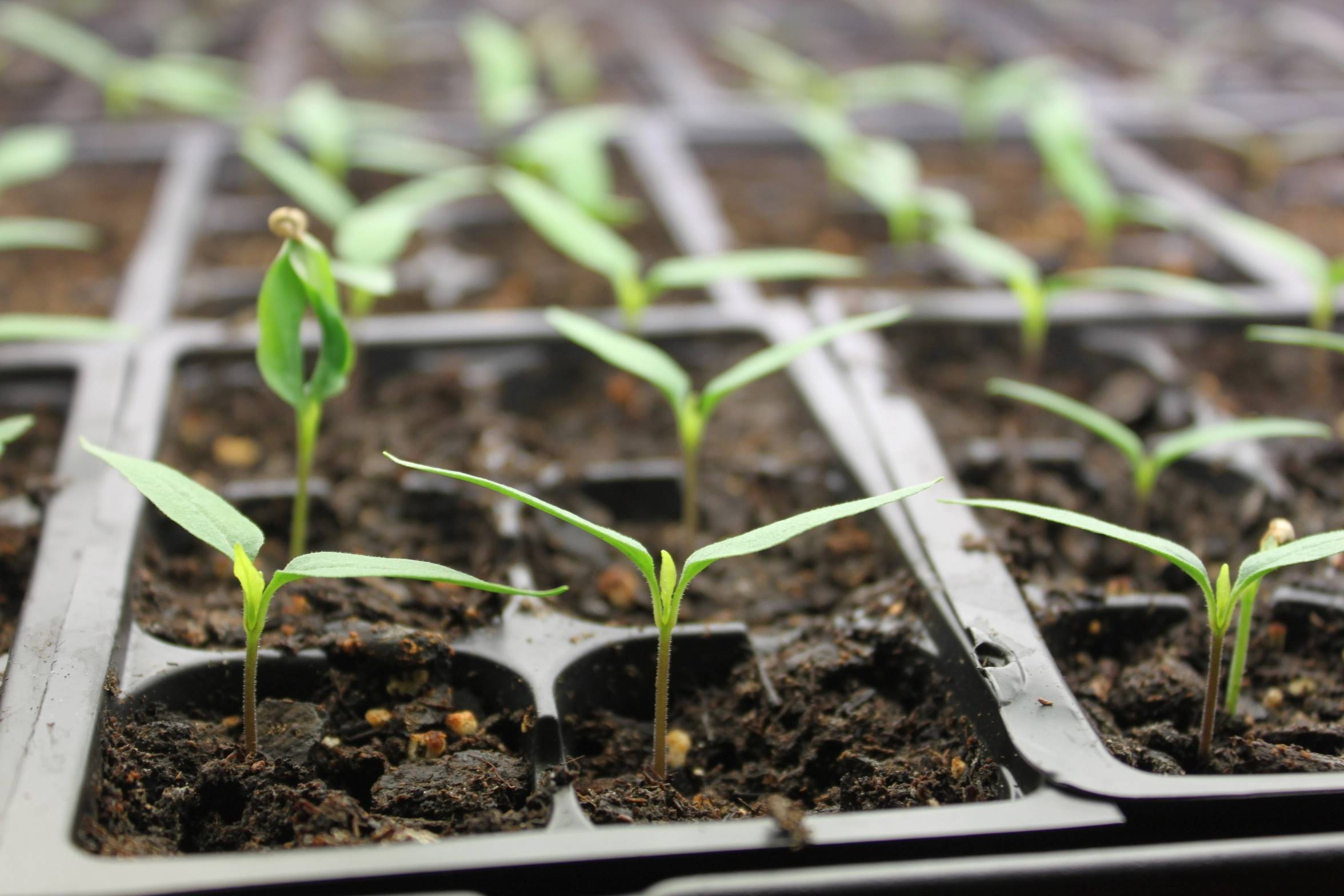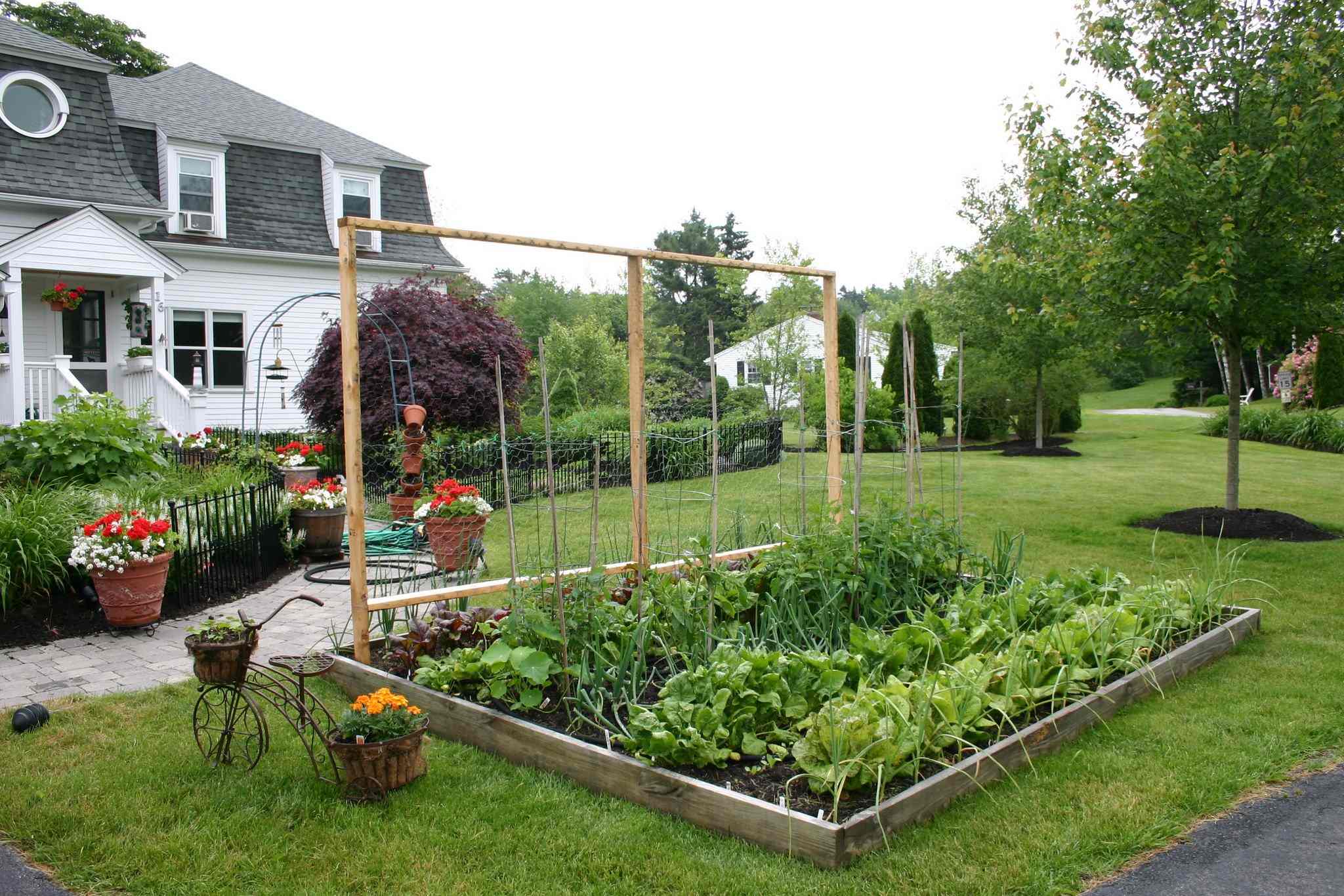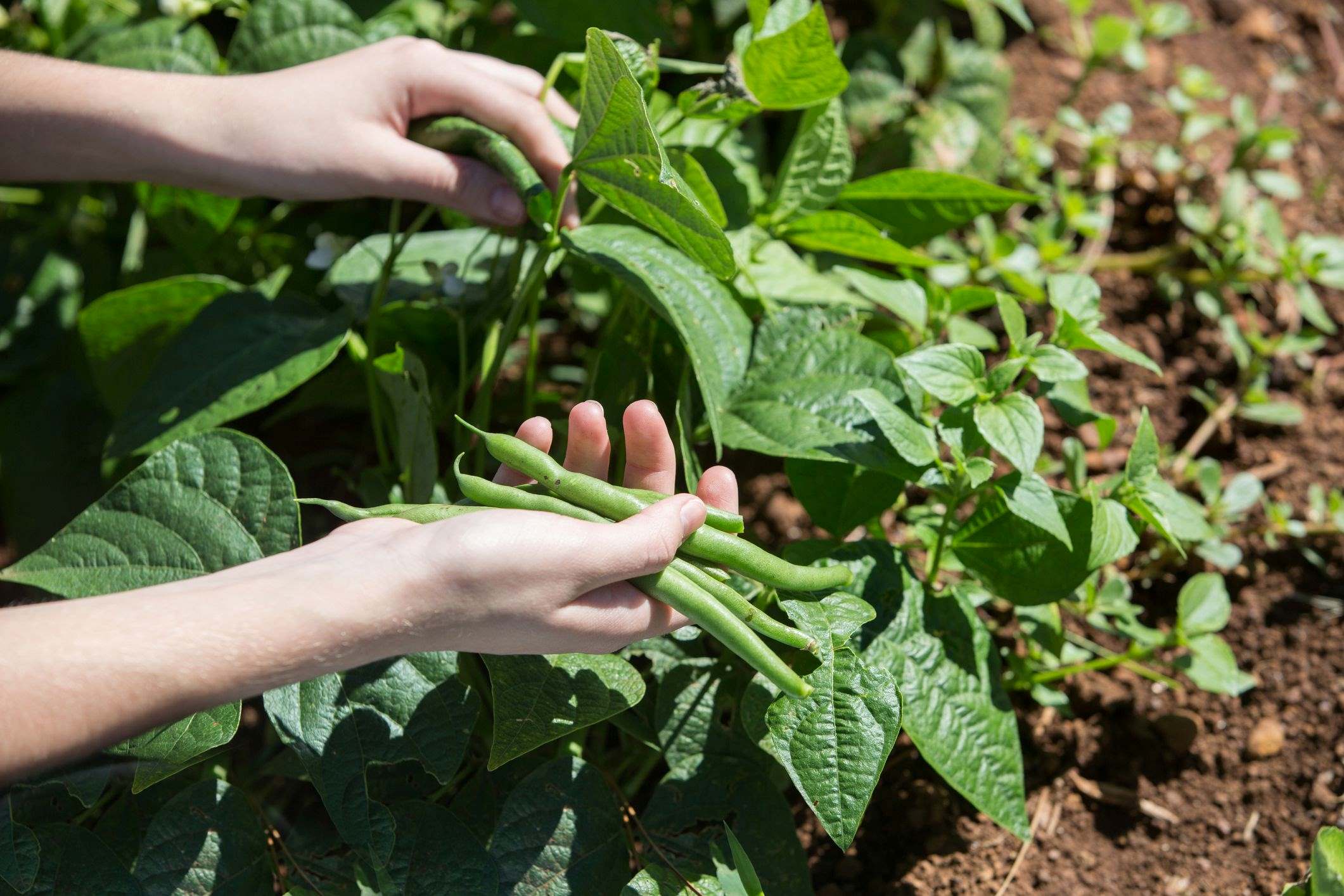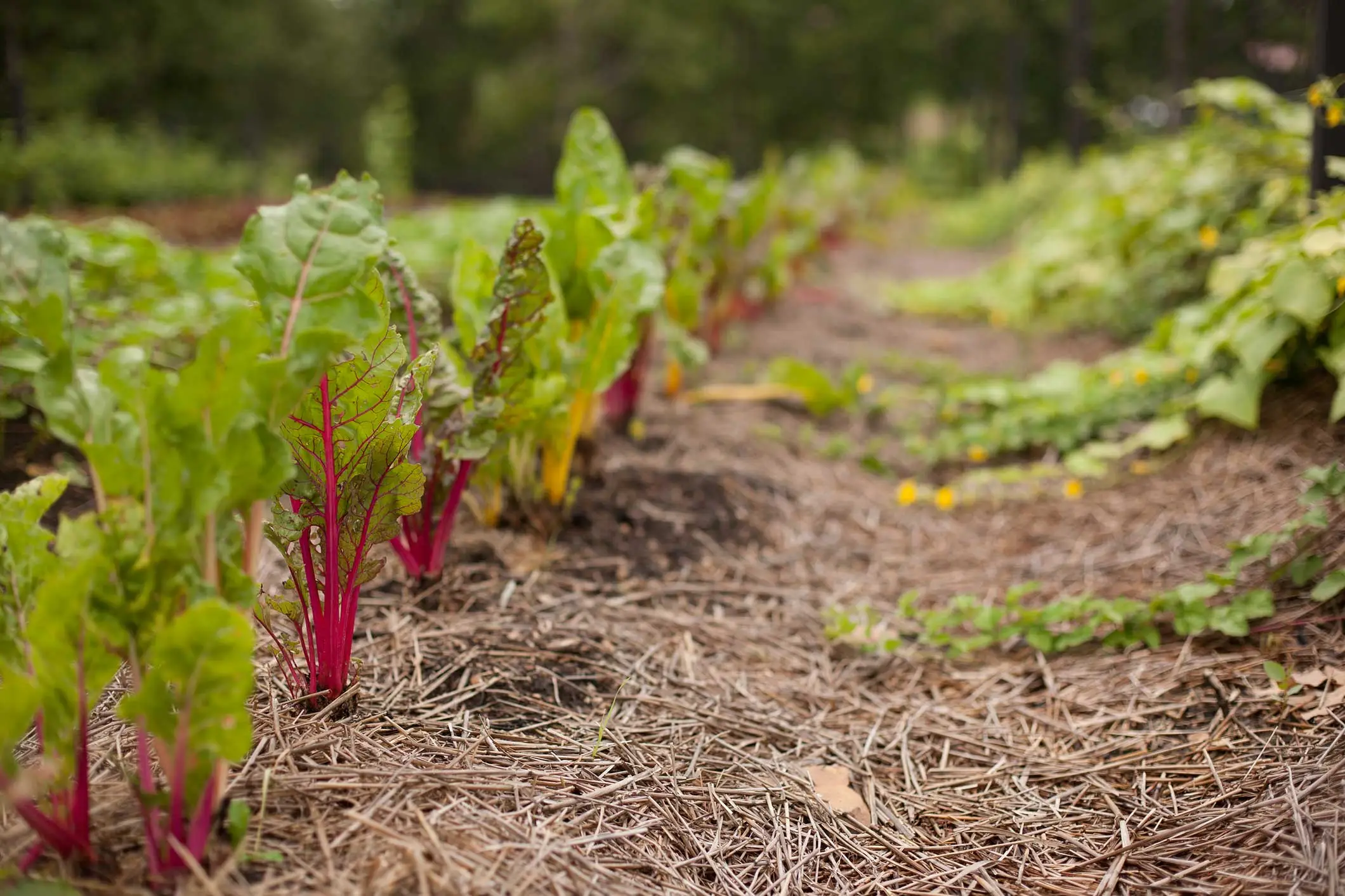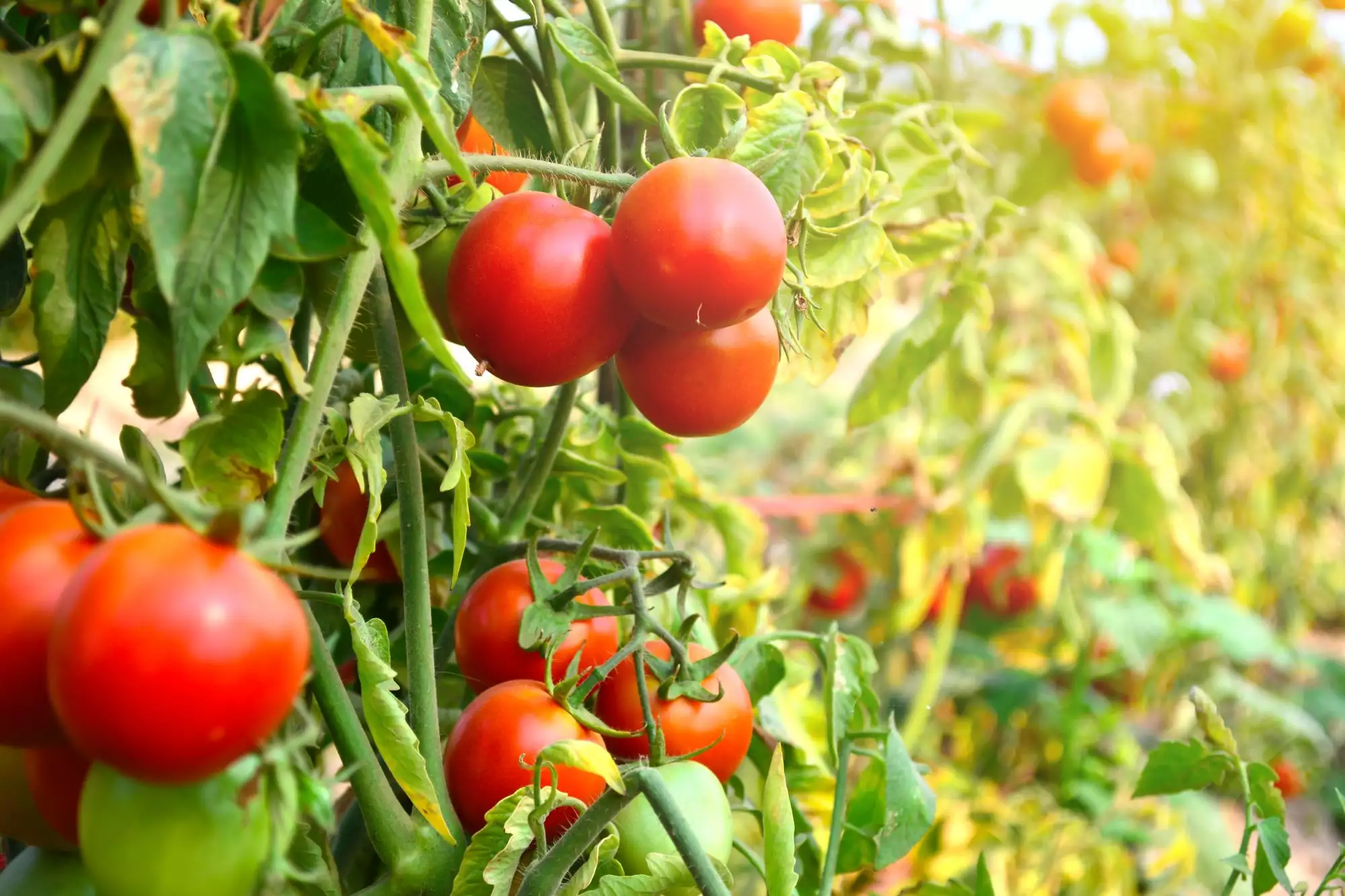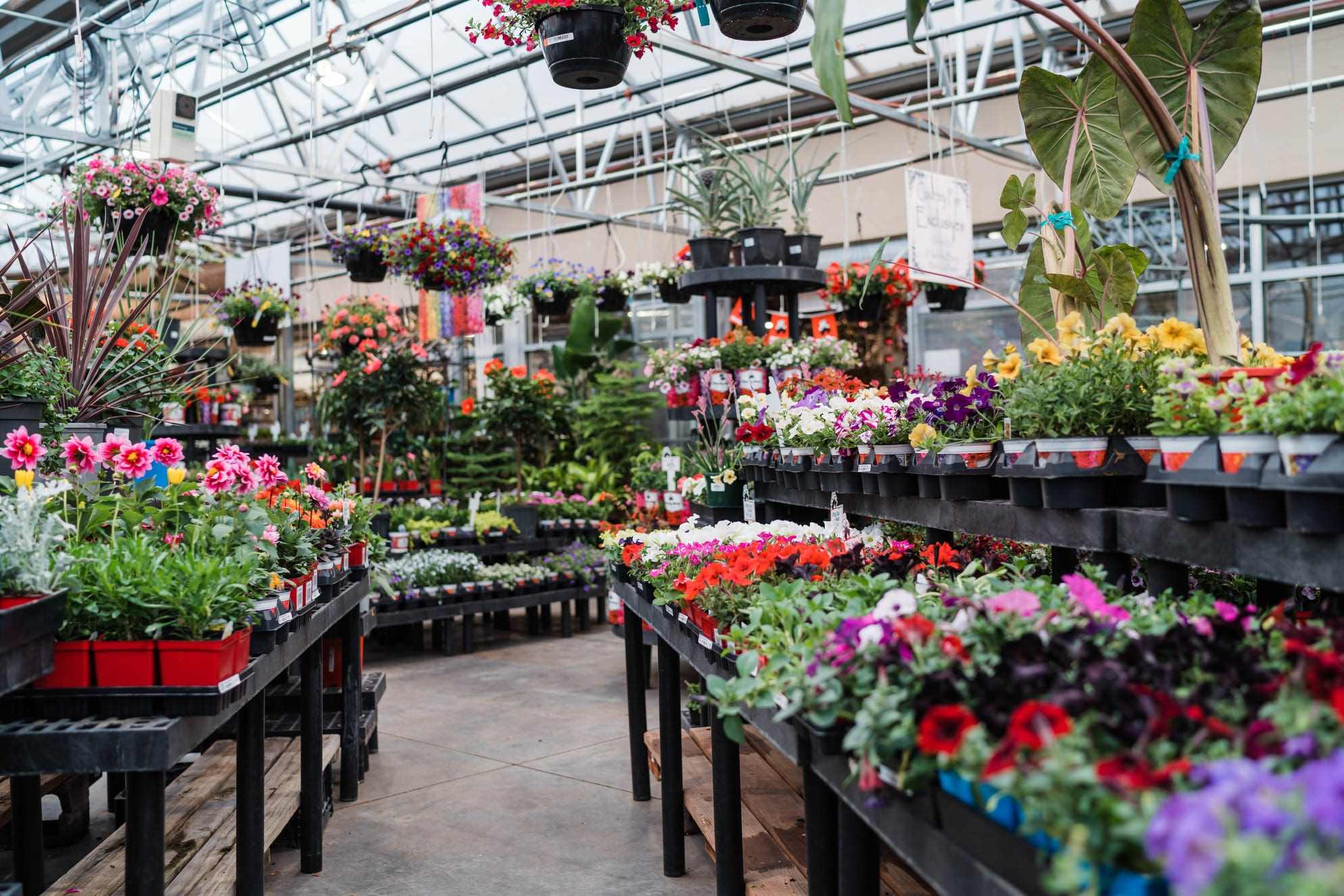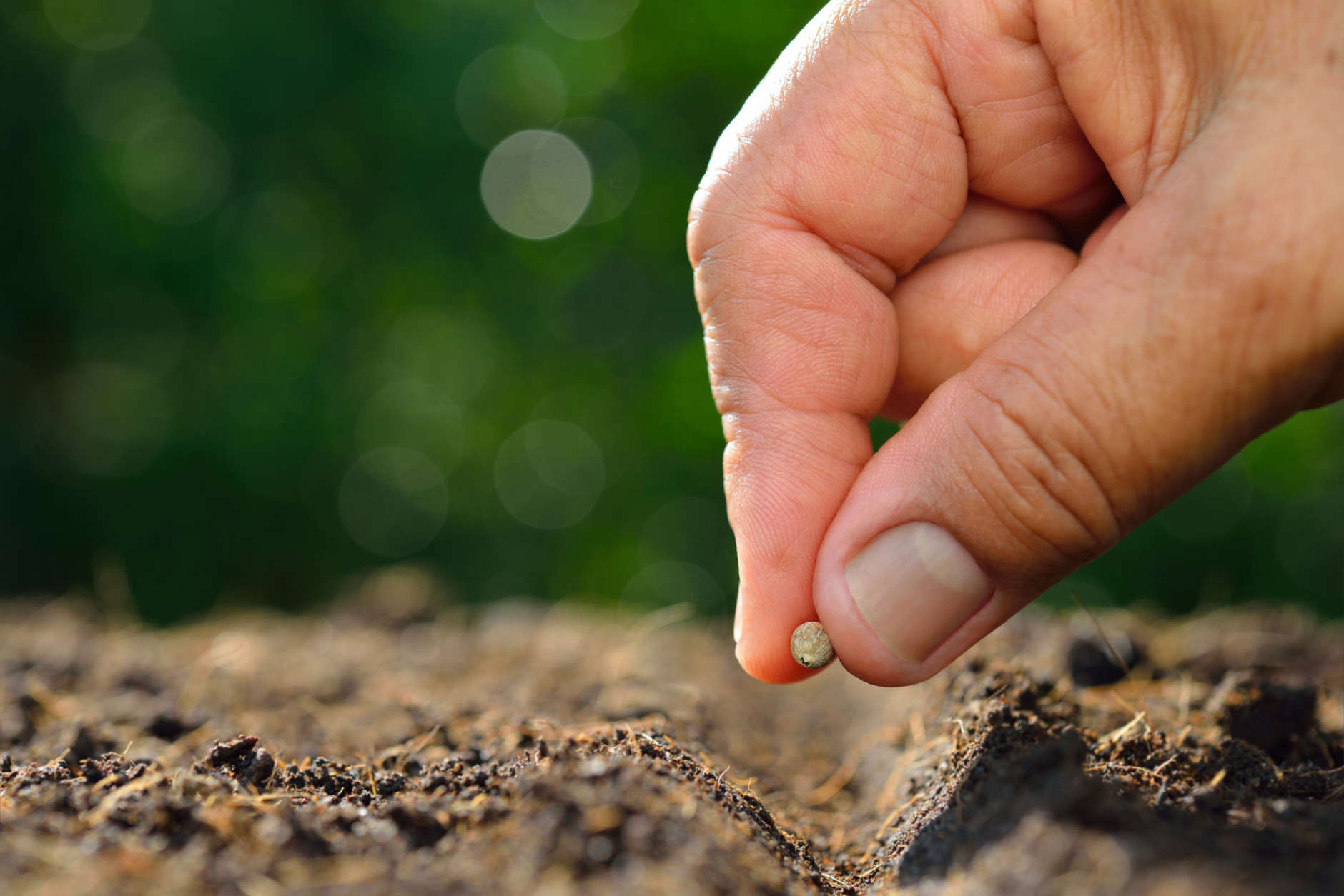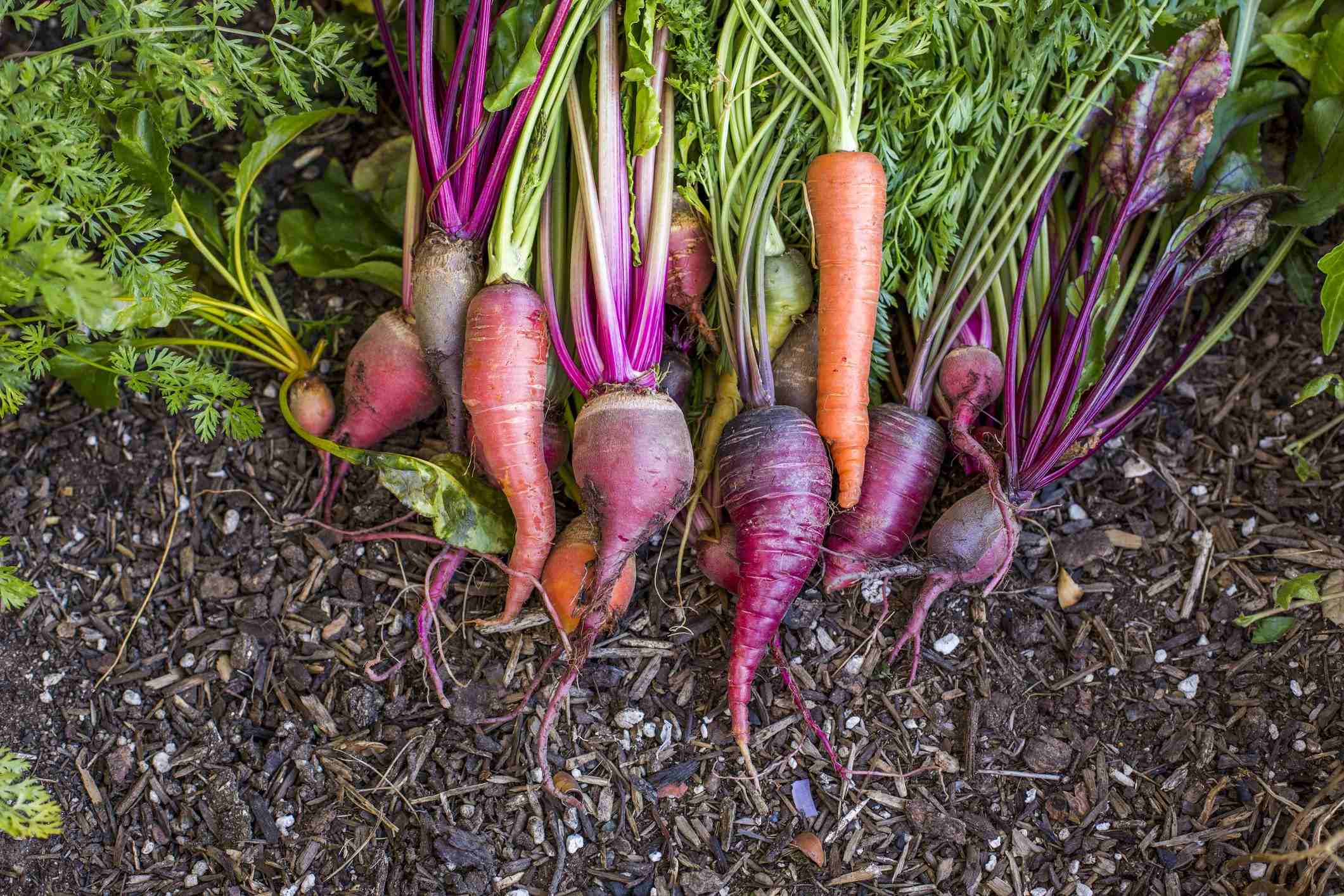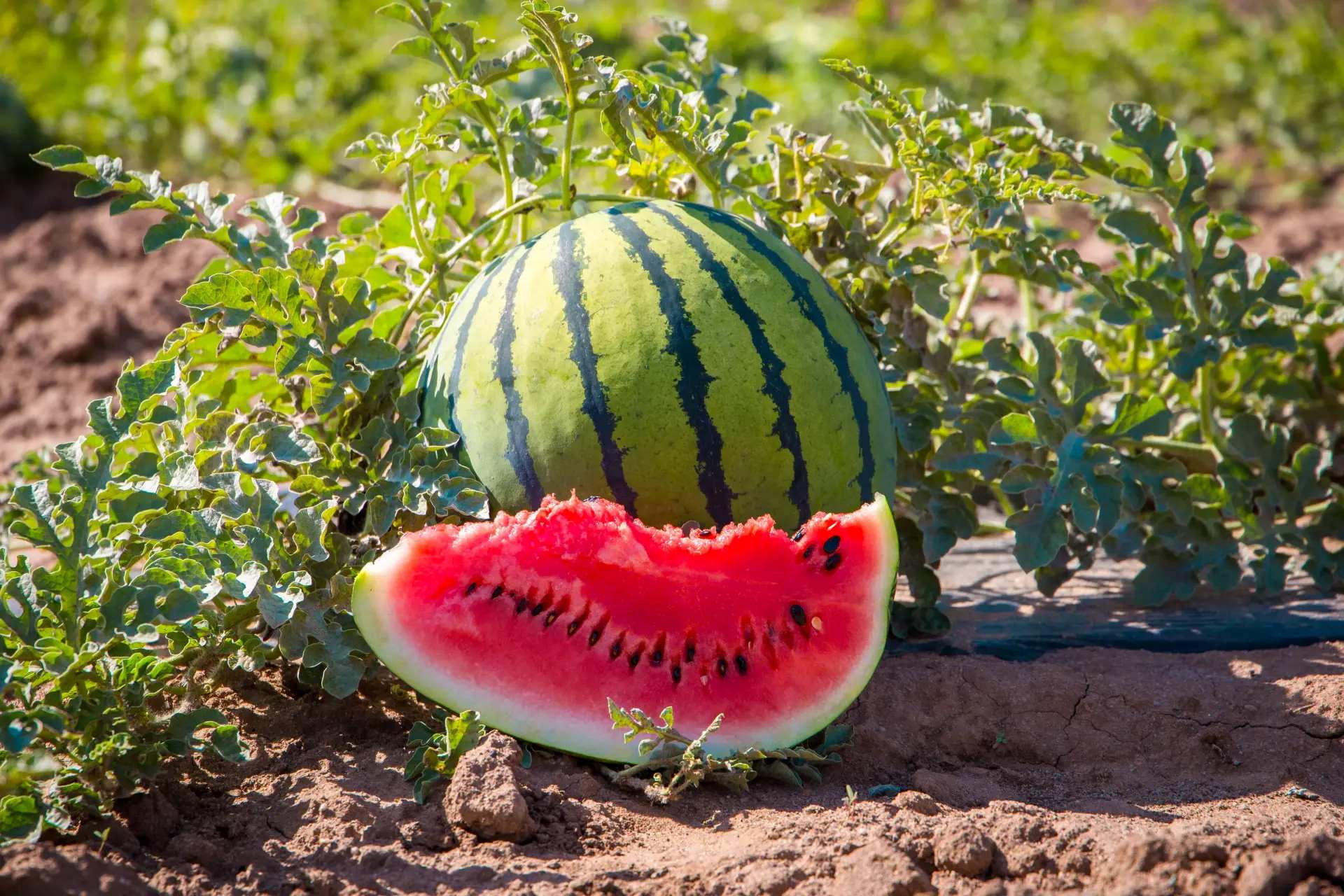Home>Gardening Techniques>Seasonal Gardening>When To Start Planting In Zone 8A
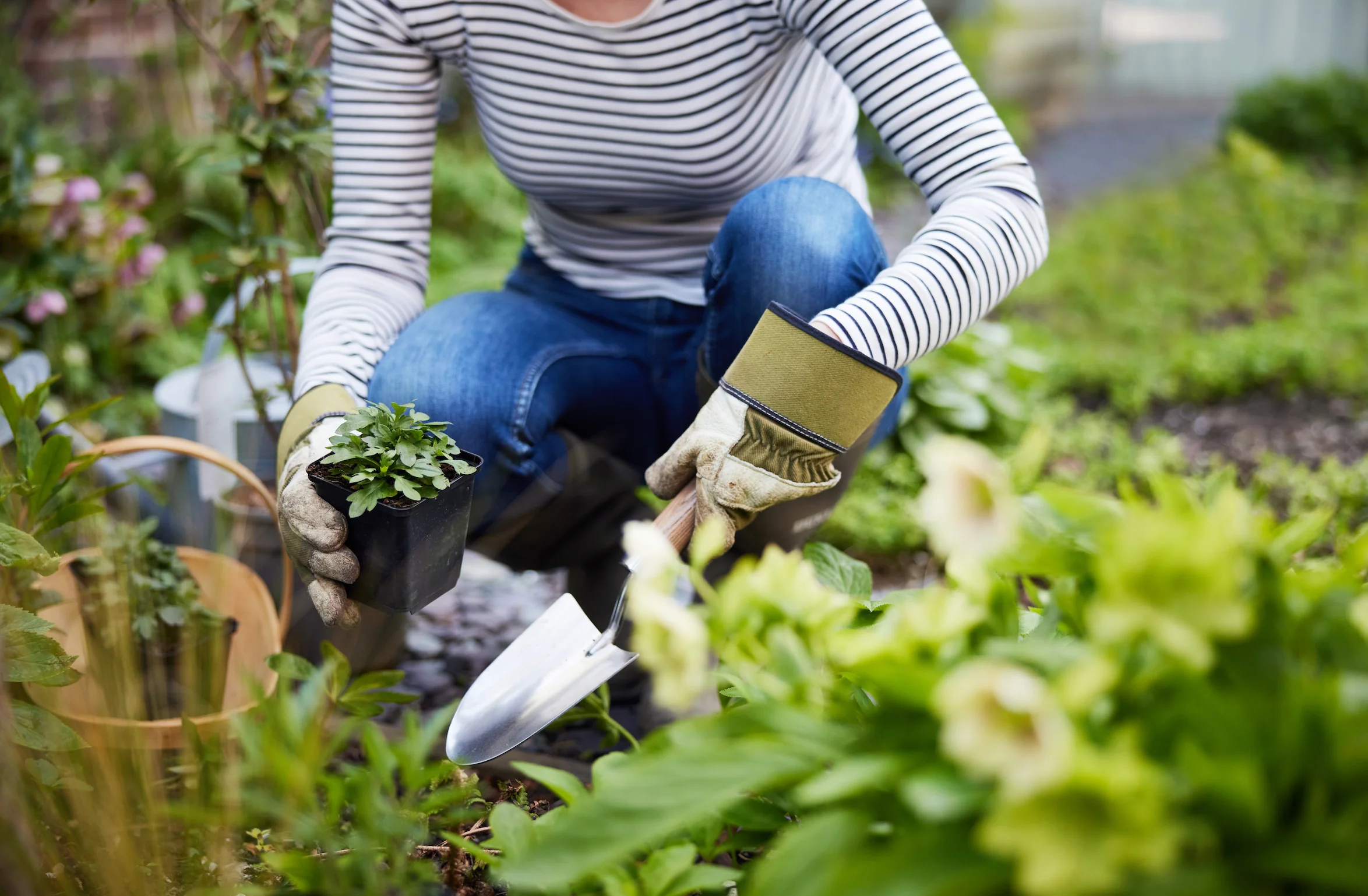

Seasonal Gardening
When To Start Planting In Zone 8A
Modified: January 22, 2024
Discover the ideal time to begin your seasonal gardening in Zone 8A. Maximize your planting success with our expert tips and advice.
(Many of the links in this article redirect to a specific reviewed product. Your purchase of these products through affiliate links helps to generate commission for Chicagolandgardening.com, at no extra cost. Learn more)
Table of Contents
- Introduction
- Understanding USDA Plant Hardiness Zones
- Overview of Zone 8A
- Factors to Consider before Planting
- Recommended Planting Dates for Zone 8A
- Early Spring Planting Options
- Late Spring Planting Options
- Early Fall Planting Options
- Late Fall Planting Options
- Special Considerations for Zone 8A Planting
- Conclusion
Introduction
Gardening is a rewarding and therapeutic hobby that allows you to connect with nature and cultivate a beautiful outdoor space. However, as every seasoned gardener knows, the success of your garden heavily relies on the timing of your planting. Understanding the optimal planting dates for your specific region is crucial for ensuring that your plants thrive and flourish.
One key factor in determining the right time to plant is the USDA Plant Hardiness Zone. These zones are based on average annual minimum temperatures and help gardeners identify which plants are most likely to survive and thrive in their particular area. In this comprehensive guide, we will focus on Zone 8A, which covers a wide range of climates and offers a variety of planting opportunities throughout the year.
Located in regions with mild winters and relatively warm summers, Zone 8A provides an ideal environment for a diverse selection of plants. However, it’s essential to consider a few factors before you jump into planting. Soil conditions, sun exposure, and the specific needs of the plants you wish to grow are all important considerations that will contribute to a successful garden.
In the following sections, we will discuss in detail the recommended planting dates for Zone 8A, covering both spring and fall plantings. Whether you’re a novice gardener or an experienced enthusiast, this guide will provide you with the knowledge and insights you need to make informed decisions about when to start planting in Zone 8A.
Understanding USDA Plant Hardiness Zones
USDA Plant Hardiness Zones are a valuable tool for gardeners to determine which plants are most likely to thrive in their specific geographic region. The USDA divides the United States into 11 different zones, each representing a specific climate range based on the average annual minimum temperature.
These zones provide a general guideline for gardeners to select plants that can withstand the typical weather conditions in their area. Zone 1 represents the coldest region with the lowest temperatures, while Zone 11 represents the warmest region with the highest temperatures.
It’s important to note that these hardiness zones only take into account minimum temperatures and do not consider other factors such as maximum temperatures, humidity, or soil conditions. However, they still play a crucial role in helping gardeners make informed decisions about their planting choices.
When referring to the USDA Plant Hardiness Zones, the letter “A” or “B” is often used to further narrow down the specific climate within each zone. The “A” designation indicates a slightly colder climate within the zone, while the “B” designation indicates a slightly milder climate.
For example, Zone 8A is characterized by minimum average temperatures that range from 10°F to 15°F (-12°C to -9°C). This means that Zone 8A experiences milder winters compared to colder zones but still has some frost and chilly temperatures.
By understanding the USDA Plant Hardiness Zones and the specific zone you are in, you can start to choose plants that are better suited to the climate and have a higher chance of thriving in your garden.
Overview of Zone 8A
Zone 8A encompasses regions with relatively mild winters and warm summers, offering a favorable climate for a wide variety of plants. This zone stretches across the southern parts of the United States, including parts of the Gulf Coast, the West Coast, and even some inland areas.
In Zone 8A, the average minimum temperatures range from 10°F to 15°F (-12°C to -9°C). While frost is still a possibility, the winters are generally mild compared to colder zones. However, summer temperatures can reach highs of 90°F (32°C) and above, so it’s important to choose plants that can tolerate both the cooler winter temperatures and the hotter summer conditions.
The longer growing season in Zone 8A provides gardeners with ample opportunities to experiment with various planting options. From colorful spring blooms to bountiful fall harvests, this zone offers a wide range of possibilities for your garden.
With the mild climate, Zone 8A allows for the successful cultivation of both cool-season and warm-season plants. Cool-season vegetables like lettuce, spinach, and broccoli can be grown in the early spring or late fall when temperatures are still mild. On the other hand, warm-season crops like tomatoes, peppers, and squash can be planted in the late spring to take advantage of the longer, warmer growing season.
In terms of flowering plants, Zone 8A provides an abundance of choices. From vibrant spring bulbs like tulips and daffodils to summer-blooming perennials like roses and daylilies, there is no shortage of options to create a beautiful and colorful garden throughout the year.
It’s important to note that while Zone 8A has relatively mild winters, occasional frost can still occur. Pay attention to weather forecasts and protect more tender plants by covering them or bringing them indoors during colder nights.
Overall, Zone 8A offers a favorable climate for a wide variety of plants, giving gardeners the opportunity to create a stunning and diverse garden throughout the seasons.
Factors to Consider before Planting
Before you start planting in Zone 8A, there are several important factors to consider to ensure the success of your garden. Taking these factors into account will help you make informed decisions about plant selection, soil preparation, and proper care.
1. Climate: While Zone 8A generally has mild winters and warm summers, it’s crucial to be aware of the specific climate in your area. Monitor average temperatures and weather patterns to understand when the last frost typically occurs in the spring and when the first frost is expected in the fall. This information will guide your planting schedule and help you choose plants that can withstand the local climate conditions.
2. Soil Conditions: Assess the soil in your garden to determine its composition and fertility. Zone 8A can have a variety of soil types, including sandy, loamy, or clay-based soils. Conduct a soil test to determine its pH level and nutrient content. Understanding the soil characteristics will help you select plants that are well-suited to the soil type and allow you to make any necessary amendments to create optimal growing conditions.
3. Sun Exposure: Different plants require varying degrees of sun exposure. Evaluate the amount of sunlight your garden receives throughout the day. Some areas may have full sun exposure, while others might be partially shaded due to nearby trees or structures. Choose plants that are appropriate for the available sunlight in your specific garden area.
4. Planting Space: Consider the size of your garden and the available planting space. Some plants require ample space to spread and grow, while others can thrive in smaller containers or raised beds. Plan your garden layout accordingly, ensuring that each plant has enough room to thrive and establish healthy root systems.
5. Watering Needs: Understand the water requirements of the plants you wish to grow. Zone 8A can experience periods of dry weather, so it’s important to choose plants that are drought-tolerant or have lower water needs. Consider installing a watering system or setting a regular watering schedule to provide adequate moisture to your plants.
By considering these factors before planting in Zone 8A, you will be better equipped to choose the right plants, prepare the soil appropriately, and provide the optimal growing conditions for a thriving and successful garden.
Recommended Planting Dates for Zone 8A
Zone 8A offers a longer growing season compared to colder regions, providing gardeners with multiple options for planting throughout the year. Whether you’re starting from seeds or transplanting young plants, it’s essential to know the optimal planting dates to ensure the best chance of success for your crops and flowers.
Here are the recommended planting dates for Zone 8A:
Early Spring: In Zone 8A, early spring plantings can begin as early as February, depending on the weather conditions. Cool-season vegetables like lettuce, spinach, carrots, and radishes can be directly sown into the ground during this time. Start seeds indoors for warm-season vegetables like tomatoes, peppers, and eggplants so they have time to grow before transplanting them outdoors in late spring.
Late Spring: Late spring is an optimal time for planting a wide variety of crops in Zone 8A. By this time, the danger of frost has typically passed, allowing you to sow and transplant warm-season vegetables, such as cucumbers, squash, melons, and beans. It’s also a perfect time to sow annual flowers like marigolds, zinnias, and sunflowers for vibrant summer blooms.
Early Fall: Zone 8A provides a second growing season in the fall. As temperatures start to cool down, you can plant cool-season vegetables once again. This includes crops like broccoli, cauliflower, Brussels sprouts, and kale. Take advantage of the milder weather to grow salad greens such as lettuce, arugula, and spinach, which thrive in cooler temperatures.
Late Fall/Winter: Zone 8A experiences mild winters, allowing for certain cold-hardy vegetables to be planted and grown throughout the season. Root vegetables like beets, turnips, and carrots can be planted in late fall for a winter harvest. Additionally, consider planting garlic cloves in the late fall, as they require a period of cold to develop a strong, flavorful bulb.
It’s important to note that these planting dates are general guidelines, and local weather conditions can vary. Keep an eye on weather forecasts and adjust your planting schedule accordingly. For more specific recommendations based on your specific location within Zone 8A, consult local gardening resources or cooperative extension services.
By following the recommended planting dates for Zone 8A, you can ensure that your plants have the best chance of thriving and producing an abundant harvest or a stunning display of flowers throughout the seasons.
Early Spring Planting Options
Early spring is an exciting time for gardeners in Zone 8A as it marks the beginning of the growing season. Although some areas may still experience occasional frost, there are several cool-season crops that can be planted and enjoyed during this time. Here are some popular early spring planting options for Zone 8A:
Lettuce: Lettuce is a delicious and versatile green that thrives in the cooler temperatures of early spring. Sow lettuce seeds directly into well-prepared soil or start them indoors for later transplanting. Choose from a variety of lettuce types, including crispheads, romaine, and loose-leaf varieties, to add fresh and crunchy salads to your meals.
Spinach: Spinach is another cool-season crop that can be planted in early spring. Rich in nutrients and packed with flavor, spinach is easy to grow and can tolerate light frosts. Plant spinach seeds directly in the ground and keep the soil consistently moist for optimal germination. Enjoy the tender leaves in salads, sautés, or as a healthy addition to your favorite dishes.
Carrots: Carrots are a popular root vegetable that can be sown directly into the ground in early spring. Choose a sunny spot with well-draining soil and sow the seeds at the recommended depth. Be sure to thin the seedlings as they grow to provide space for the roots to develop. By late spring or early summer, you’ll be able to harvest sweet and crunchy carrots for fresh eating or as a flavorful addition to various recipes.
Radishes: Radishes are quick-growing root vegetables that are perfect for early spring planting. They add a burst of color and zesty flavor to salads and sandwiches. Sow radish seeds directly into well-prepared soil and keep them consistently moist. Within a few weeks, you’ll be able to harvest the small, tender radishes. For a continuous harvest, sow radishes every few weeks throughout the spring season.
Peas: Peas are a delightful addition to any early spring garden. Whether you prefer shelling peas, snap peas, or snow peas, these legumes thrive in cooler temperatures. Plant pea seeds directly in the ground in early spring, providing them with support as they grow. Enjoy the fresh, sweet pods straight from the garden or incorporate them into stir-fries and salads.
Remember to check the specific planting guidelines for each crop, as some varieties may have specific requirements or recommendations. Additionally, consider using row covers or season extenders to protect tender plants from late frosts or colder temperatures.
By taking advantage of the early spring planting options in Zone 8A, you can begin your gardening season with a variety of delicious and nutritious crops that thrive in the cooler temperatures of the season.
Late Spring Planting Options
Late spring in Zone 8A brings warmer temperatures and signals the ideal time for planting a wide range of warm-season crops. Take advantage of the longer growing season and abundant sunshine by considering these late spring planting options:
Tomatoes: Late spring is the perfect time to plant tomatoes in Zone 8A. With the risk of frost behind you, transplant tomato seedlings into well-amended soil with good drainage and plenty of sunlight. Choose from a variety of tomato types, including cherry tomatoes, beefsteak, and heirloom varieties, and watch as they grow and produce juicy, flavorful fruits throughout the summer.
Peppers: Like tomatoes, peppers thrive in the warmth of late spring and summer. Plant pepper seedlings in well-drained soil and provide them with full sun exposure. Choose from bell peppers, jalapeños, or other hot pepper varieties depending on your taste preferences. Be sure to water consistently and provide support as the plants grow to encourage healthy, upward growth.
Eggplants: Eggplants are heat-loving vegetables that do well when planted in late spring. Choose a sunny spot and plant seedlings in nutrient-rich, well-draining soil. Keep the soil consistently moist and provide support for the plants as they grow. Harvest the glossy, dark purple fruits when they reach maturity and enjoy them roasted, grilled, or incorporated into various dishes for a flavorful addition to your meals.
Summer Squash: Late spring is the time to plant summer squash varieties like zucchini and yellow squash. These fast-growing plants produce an abundant harvest throughout the summer. Plant the seedlings in fertile soil and provide them with ample sunlight. Keep the soil moist and harvest the tender squash when they reach the desired size. Use them in stir-fries, pasta dishes, or even grill them for a delicious summer treat.
Cucumbers: Cucumbers thrive in warm weather, making late spring an excellent time to plant them. Choose cucumber varieties that suit your preferences, whether they are slicing cucumbers or pickling cucumbers. Plant the seedlings in well-drained soil and provide them with a trellis or support structure to encourage upward growth. Keep the soil consistently moist and harvest the cucumbers when they are firm and crisp.
Remember to provide adequate water and regular maintenance as these warm-season crops grow. Consider adding organic mulch around the base of the plants to help retain moisture and reduce weed growth.
With late spring planting options in Zone 8A, you can enjoy an abundance of delicious summer vegetables that thrive in the heat, providing you with a bountiful harvest to enjoy throughout the season.
Early Fall Planting Options
As summer comes to a close in Zone 8A, the cooler temperatures of early fall create an ideal environment for planting certain cool-season crops. Take advantage of the milder weather and extend your gardening season with these early fall planting options:
Broccoli: Broccoli is a nutritious and delicious cool-season vegetable that thrives in the mild temperatures of early fall. Plant broccoli seedlings in well-prepared soil with plenty of organic matter. Ensure they receive at least six hours of sun each day and provide regular water to keep the soil evenly moist. Harvest the heads when they are firm and tight for the best flavor and texture.
Cauliflower: Another fantastic cool-season choice, cauliflower can be planted in early fall to be harvested later in the season. Choose a variety that suits your taste preferences, whether it’s traditional white or colorful purple or orange cauliflower. Plant seedlings in nutrient-rich soil and provide consistent moisture. As the heads start to form, consider tying or folding the outer leaves over them to protect them from direct sunlight, ensuring a crisp, white head at harvest time.
Brussels Sprouts: Brussels sprouts are a flavorful cool-season vegetable that can be planted in early fall for a late fall harvest. Start with seedlings and provide them with fertile, well-draining soil. Brussels sprouts plants benefit from full sun exposure and a consistent supply of water. As the weather gets cooler, the sprouts will continue to develop and can be harvested when they reach their desired size. The flavor improves after a light frost, making them an excellent addition to fall and winter dishes.
Kale: Kale is a versatile and nutritious leafy green that can be planted in early fall for a continuous harvest. Plant kale seedlings in well-amended soil and provide them with at least six hours of sunlight. Regularly water to keep the soil evenly moist. Kale leaves can be harvested when they reach the desired size, allowing for multiple harvests throughout the fall and into the winter. Use them in salads, sautés, soups, or smoothies for a healthy and flavorful addition to your meals.
Beets: Beets are root vegetables that thrive in the cooler temperatures of early fall. Plant beet seeds directly into well-prepared soil and provide regular water to keep the soil moist. Beets can be harvested when they reach the desired size, typically around 1 to 2 inches in diameter. Enjoy them roasted, pickled, or grated in salads for a sweet and earthy flavor.
Remember to monitor and protect your early fall plantings as temperatures start to drop. Covering them with row covers or blankets during cold snaps will help prevent frost damage and extend the growing season.
With these early fall planting options in Zone 8A, you can continue to enjoy fresh and flavorful crops well into the cooler months, providing a vibrant and bountiful garden throughout the fall season.
Late Fall Planting Options
Late fall in Zone 8A brings cooler temperatures, making it an ideal time to plant cool-season crops that can withstand lower temperatures. By taking advantage of the mild winters in this zone, you can continue to harvest fresh produce well into the colder months. Consider these late fall planting options for your garden:
Garlic: Late fall is the perfect time to plant garlic bulbs for a bountiful harvest the following year. Divide the garlic bulbs into individual cloves and plant them with the pointed end facing up, about 2 inches deep and 6 to 8 inches apart. Garlic requires a period of cold to develop a strong, flavorful bulb. Mulch the planting bed to protect the cloves and promote healthy growth during the winter months.
Onions: Onions are a versatile kitchen staple that can be planted in late fall for a spring harvest. Choose onion sets or seedlings and plant them about 1 inch deep and 4 to 6 inches apart. Onions prefer well-drained soil and full sun exposure. Mulch the bed to protect the young plants during the winter months. In the spring, you’ll be rewarded with fresh, flavorful onions to use in your favorite recipes.
Winter Greens: Late fall is an excellent time to plant winter greens such as kale, collard greens, and Swiss chard. These leafy greens are incredibly cold-tolerant and can withstand freezing temperatures. Plant seedlings or sow seeds directly into the ground and provide them with well-prepared soil. Winter greens can be harvested for fresh salads or cooked as a nutritious side dish throughout the winter months.
Carrots: Carrots can be planted in late fall for a winter harvest in Zone 8A. Choose a variety suitable for overwintering, such as Nantes or Danvers. Sow the seeds directly into the ground and provide them with well-draining soil. As the temperatures cool, covering the carrot bed with straw or a cold frame can provide additional protection. With proper care, you can enjoy sweet, homegrown carrots during the winter months.
Turnips: Turnips are root vegetables that thrive in cool temperatures, making them an excellent choice for late fall planting. Sow the seeds directly into the well-prepared soil, spacing them 3 to 4 inches apart. Turnips are relatively fast-growing, and you can harvest the young, tender roots within a few weeks. The greens are also edible and can be enjoyed cooked or raw.
Remember to provide adequate water to newly planted crops and protect them from extreme temperature changes. Covering the plants with row covers or using cold frames can help insulate them from the cold and extend their growth period.
With late fall planting options in Zone 8A, you can continue to enjoy a bountiful harvest even as the temperatures decrease, ensuring a supply of fresh produce throughout the winter months.
Special Considerations for Zone 8A Planting
Zone 8A offers a favorable climate for gardening with its mild winters and warm summers. However, there are some special considerations to keep in mind to maximize success in your Zone 8A garden:
Frost Protection: While Zone 8A experiences milder winters, occasional frost can still occur. Keep an eye on weather forecasts and be prepared to protect more tender plants from late-season frosts. Covering them with frost blankets or utilizing row covers can provide the necessary insulation to prevent damage.
Heat Tolerance: Zone 8A also experiences hot summers, with temperatures often reaching 90°F (32°C) and above. When selecting plants for your garden, choose varieties that have good heat tolerance. Opt for crops known to thrive in warmer conditions, such as heat-resistant tomatoes, peppers, and drought-tolerant herbs like rosemary and lavender.
Watering: Adequate water is crucial for a successful garden, especially during dry periods or heatwaves. Pay attention to your plants’ water needs and provide consistent moisture. Consider using mulch to help retain moisture and reduce weed growth. Installing a drip irrigation system or using soaker hoses can also ensure efficient water delivery to your plants.
Soil Health: Zone 8A can have a variety of soil types, including sandy, loamy, or clay-based soils. Conduct a soil test to determine the pH level and nutrient content of your soil. Amend the soil with organic matter, such as compost or well-rotted manure, to improve its structure and fertility. Regularly adding organic matter will also help retain moisture in sandy soils and enhance drainage in clay soils.
Companion Planting: Take advantage of companion planting in your Zone 8A garden. Certain plants have beneficial relationships when grown together, such as deterring pests or enhancing growth. For example, planting marigolds alongside tomatoes can help repel pests like nematodes. Research companion planting strategies to maximize the health and productivity of your garden.
Season Extension: To extend the growing season in Zone 8A, consider using season-extending techniques. Row covers, cold frames, or hoop houses can provide protection from colder temperatures, allowing you to start planting earlier in the spring or prolong the harvest in the fall.
By considering these special considerations for Zone 8A planting, you can overcome the challenges and make the most of the unique climate in this zone. Pay attention to weather patterns, select appropriate plant varieties, and provide the necessary care to ensure a thriving and productive garden throughout the year.
Conclusion
Gardening in Zone 8A offers a wonderful opportunity to cultivate a vibrant and productive garden throughout the year. By understanding the USDA Plant Hardiness Zones, such as Zone 8A, you can make informed decisions about plant selection and planting schedules to ensure the success of your garden.
In Zone 8A, you have the advantage of a mild winter climate and warm summers, providing a diverse range of planting options. Whether you’re planting cool-season crops in early spring, warm-season favorites in late spring, or extending the growing season with fall and winter plantings, there is something for every gardener in Zone 8A.
Factors such as climate, soil conditions, sun exposure, and water requirements should be taken into consideration before planting. By properly assessing these factors, you can create an optimal environment for your plants and set them up for success.
From early spring plantings of lettuce and spinach to late spring plantings of tomatoes and peppers, and from early fall plantings of broccoli and kale to late fall plantings of garlic and onions, Zone 8A offers an abundance of possibilities for a diverse and thriving garden.
Remember to pay attention to special considerations, such as protecting plants from frost, addressing heat tolerance, maintaining proper watering, nurturing soil health, and utilizing beneficial techniques like companion planting and season extension methods.
By implementing these guidelines and considering the unique characteristics of Zone 8A, you can make the most of this favorable climate and enjoy a flourishing garden year-round. Whether you’re a seasoned gardener or just starting your gardening journey, Zone 8A offers an exciting and rewarding gardening experience.
So get your hands in the soil, sow those seeds, and watch your garden come to life in Zone 8A!
